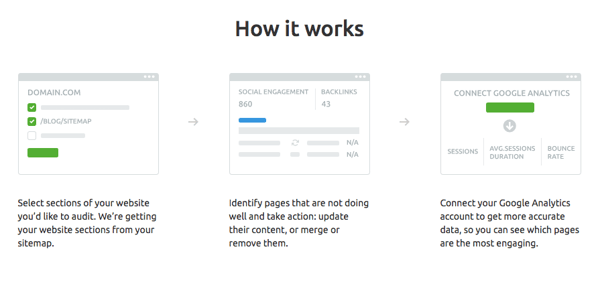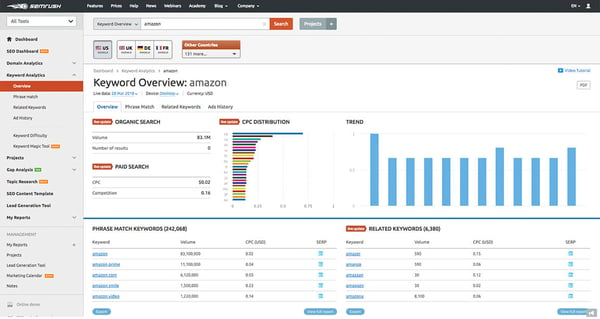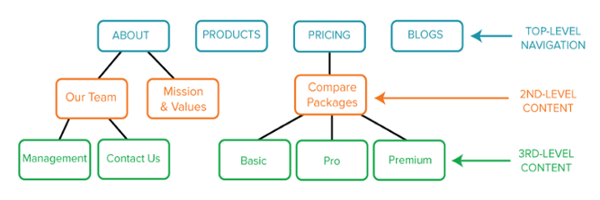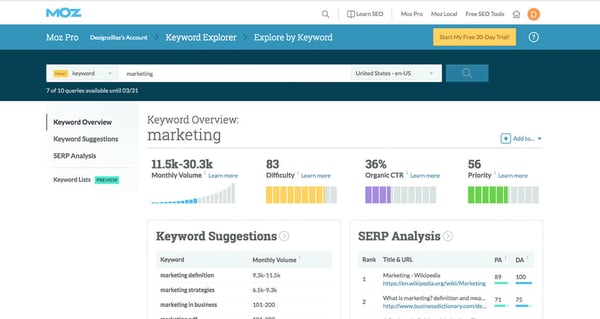The Complete Guide to Content Creation During Website Redesigns
So you’re ready for "Extreme Makeover: Website Edition", huh? With a big task like redesigning your website, it would be risky to start breaking ground and pouring the concrete without analyzing, researching and preparing a plan of action.
Luckily, there are best practices and steps for you to follow to make your redesign process as smooth as possible! We’ve put together a complete blueprint on content creation for your new website.
Analyze & Audit
When you’re redesigning your website, you’ll not only want to spruce up your design, but also the content that fills that design and gives it life! A content audit is a great way to sift through your old website content and see where improvements are needed. According to Moz, a content audit includes: “a full inventory of all indexable content on a domain, which is then analyzed using performance metrics...to determine which content to keep as-is, which to improve, and which to remove or consolidate.”
Use A Content Auditing Tool
During this site audit process, you’ll want to start by identifying any SEO areas of improvement, such as broken links or missing metadata, by pulling metrics to analyze and take action on. The first step is to gather a list of all the content on your website. You can do this by collecting a list of URLs. SEMrush’s Content Audit tool is one great option for this.
 You simply upload your sitemap and it collects your URLs for you!
You simply upload your sitemap and it collects your URLs for you!
Dig Into the Metrics

Next, SEMrush suggests grabbing these metrics for the URLs you pull to see where you can improve conversion rate:
-
User behavior metrics: page views, average session duration, bounce rate, etc.
-
Engagement metrics: likes, shares, comments, mentions, etc.
-
SEO metrics: organic traffic, backlinks, keyword rankings, dwell time, etc.
-
Sales metrics: number of leads, conversion, ROI, etc.
After running your URLs for analytics, you’ll want to see what content is working well and what content users aren’t reading, are scrolling past, or aren’t able to even navigate to. Take an overall look at your website content and consolidate to improve current pages and eliminate pages that may not be necessary. You’ll want to take a step back and analyze what’s missing in terms of a user experience and how you can better guide your prospects to connect with you, using your website.
Take time to run a keyword analysis (using a tool like SEMrush or Moz) for your website. These tools generate a list of top keywords that you can implement in your new web pages, giving your SEO a boost.
Feel the Heat
Next, take time to imagine yourself in your audience’s shoes and set up Hotjar heatmaps to check your website for UX errors. If your website seems overwhelming, confusing or even just boring, your users most likely think so too. Maybe there are areas of your website with high exit rates or bounce rates.
This could mean that there may be content that doesn’t interest your audience as much as you thought, or that you have duplicate content across your site. You might have multiple pages that could be consolidated down to one page to save your reader some time (and frustration). You also might discover popular pages that aren’t in your main navigation. By adding these pages to your nav, you could get even more traffic.
Competitive Analysis

In addition to analyzing your own website, it’s important to look at what is succeeding in your industry so you can latch onto what people are looking for! By analyzing your competition, you’ll see what their websites are doing and not doing and what you could also tackle in your website redesign. By seeing which keywords they’re using and ranking for, you can know which are good options for implementing on your new pages.
HubSpot suggests taking a walk through your top competitors’ sites to get a feel for their UX, see what elements of their site your site also has, or discover what you know you have that they don’t.
-
Click through the navigation to find the content.
-
Check out their sitemap (usually located at the bottom of their page).
-
Conduct a content audit to map out the quality of their content, the publishing frequency of their content and what they’re discussing in their content.
-
Analyze what they’re doing that you’re not, what you are that you maybe shouldn’t be, the length of their content, the topics they use, the topics they’re missing out on, similarities and differences, etc.
With this newly gathered insight about your top competition, you’re ready to step up your content game! You’ll be able to optimize your content based on what your competitors do or don’t have in theirs.
Map It Out
Brand Guidelines
Your website redesign needs to be exactly that—redesigned in all aspects. And that includes your content! Imagery and copy should accurately reflect your new designated feel. Decide on a tone and style you want to use in your updated copy. This will ensure your new pages and updated content all have a similar feel in order to allow readers to feel comfortable with your brand.
Update Your Sitemap
With new website content comes new structure. Based on your research and auditing, you’ll likely have pages in your navigation that you want added, removed, hidden, made more visible, organized differently, etc. As you create an updated sitemap, it’s important to ensure that the organization of your content on your site is intentional and aligns with the vision of your user experience. During this step, you can also map out which pages need a content spruce-up, which pages need a complete rewrite, and which pages are a totally new concept!
Be sure to track which CTAs are on each page, and if they need to be updated. Because you’re likely removing pages altogether, some CTAs may also need to be removed or revised, if they link to any pages that are going to be removed. Or maybe you think it would be more strategic based on your click-through rates, if the CTAs moved to a more visible place on the page, or a totally new page! This is essential to map out so that your developers can execute the correct linking on your new website build.
Revise and Optimize
Based on your keyword analysis you’ve already completed, you’ll now want to designate keywords to each new page, using the keyword analysis research you completed previously. For SEO purposes, you’ll incorporate these keywords seamlessly throughout your website. This will allow Google to pick up on your keyword use as it crawls your site and determine your ranking for each keyword.
With the results of your site audit, you’ll then begin going through each page and either rewriting, reworking or eliminating content. We recommend starting with the high-impact pages (HIPs) and then moving into the low-impact pages (LIPs). When you’re finished updating content, you’ll also want your content to be reviewed and revised by the people who best know your brand. This content is the digital salesperson of your company, so you want it to say exactly what you need it to say to in order to convert.
After you’ve completed the content for your pages, the last step is to draft the metadata for each page. By carefully drafting the title tag and description tag for each page that include your selected focus keyword(s), Google is able to crawl your website more easily and, ideally, help your content show up higher on search results for those keywords! For the latest and greatest on metadata length and best practices, check out this article from Moz.

And there you have it! Your new website is now fully equipped with shiny content and is ready to put on the perfect show for your visitors. Combined with a spiffy new design, your crisp new website will be ready to wow your prospects and start converting!
Content Developer at Designzillas—a digital creative agency. Maddie is passionate about creating content that users can connect with and experience.






